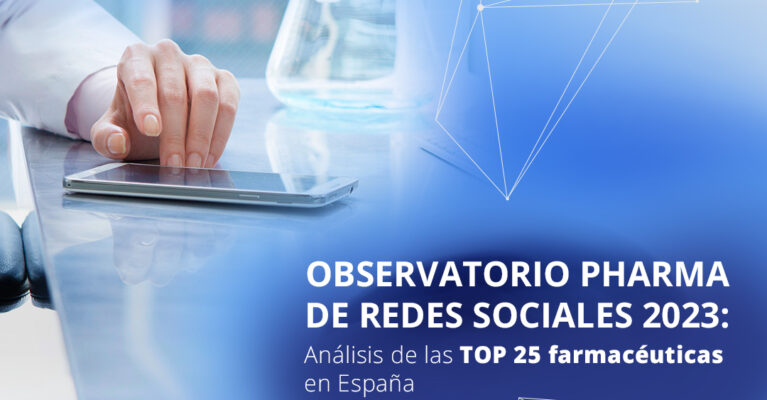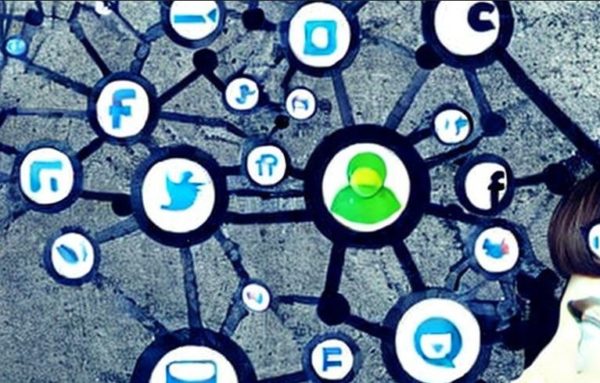
Artificial intelligence in social networks is used to improve the user experience by displaying relevant content, personalizing advertising and detecting unwanted or inappropriate content. It is also used to analyze social media data to better understand the audience and improve marketing strategy.
In contrast, in the area of Public Relations, artificial intelligence is used to analyze brand mentions in social media and, in that sense, identify opportunities for influencer relations, as well as measure the impact of PR campaigns.
Real-time data analysis: tracking trends and sentiment on social media and their impact on brand reputation
Real-time data analysis is one of the functions of artificial intelligence in social media that allows companies to track trends and sentiment in relation to their brand or their industry in general. This is achieved through the automated collection and processing of social media data, such as brand mentions, hashtags, comments, etc. With this information, companies can identify patterns and trends in online conversations, allowing them to make informed decisions on how to improve their marketing strategy, address customer concerns and respond quickly to issues that may negatively affect their reputation.
Sentiment analysis with artificial intelligence in social networks is also important because it allows companies to measure the general opinion of customers about their brand, products or services. This can help them detect potential problems before they become crises and take measures to improve brand perception.
Content personalization: automated generation of content and personalized advertising based on user behavior
Content personalization refers to the tailoring of the user experience by displaying targeted content and advertising based on user characteristics and behavior. Artificial intelligence plays an important role in content personalization by enabling automated analysis of user data and automated generation of personalized content and advertising.
For example, a social media platform can use artificial intelligence to analyze user interactions with content and show them related content that matches their interests, but, at the same time, it can also use user demographic information to display relevant advertising.

Automated user interactions: chatbots and virtual assistants to meet customer needs
Chatbots and virtual assistants are a form of automated interaction with users that rely on artificial intelligence to simulate a human conversation. These systems are used in social networks to address customer needs in an automated way, which can help companies improve efficiency and reduce costs.
In the case of chatbots, for example, they can be used to answer frequently asked questions, provide information about products and services, and process orders. Virtual assistants, on the other hand, can be used to perform more complex tasks, such as scheduling appointments, booking hotels or even performing financial transactions.
AI enables chatbots and virtual assistants to understand users’ natural language and respond appropriately, which improves the user experience. In addition, these systems can learn over time and improve their ability to understand and respond to user needs.
Crisis detection: automated monitoring systems to detect and address reputational crises in real time
Social media crisis detection refers to the ability to quickly detect and address issues that may negatively affect the reputation of a brand or company. Automated monitoring systems based on artificial intelligence, designed for social networks, are a valuable tool for detecting crises in real time and taking measures to mitigate them.
These systems analyze brand mentions in social networks and other online media in real time, identifying patterns and trends in conversations. They can detect potential problems, such as negative comments, rumors or fake news, and alert those responsible so that they can take quick action to mitigate the problem. In addition, they also use sentiment analysis to measure customers’ overall opinion of the brand and detect changes in brand perception. This can help companies detect potential problems before they become crises and take action to improve brand perception.
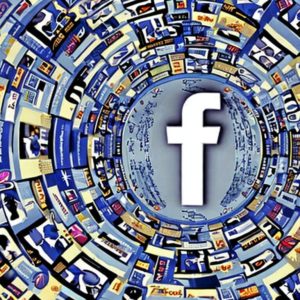
Automation of PR tasks: automated generation of press releases, automated responses to frequently asked questions and scheduling of releases
When we talk about public relations (PR) task automation, we are referring to the use of artificial intelligence to mechanize specific PR-related tasks. This can include automated generation of press releases, automated responses to frequently asked questions, and scheduling of social media posts. For example, artificial intelligence can be used to generate automated press releases from information provided by a company. This can help companies save time and effort in creating press releases.
AI can also be used to automatically answer frequently asked questions about a company or product. In addition, AI can help plan and schedule social media posts based on several factors, such as the best time to post, the content and the target audience . This allows companies to make the most of their social media presence and improve their marketing strategy.
Influencer analysis: automated identification of relevant influencers and collaboration strategies
Influencer analysis refers to the identification and tracking of people or brands with a large reach or influence in a specific industry or community. In this sense, artificial intelligence, through the analysis of social media data, can help companies automate this process to identify relevant influencers for their brand or industry.
Once identified, companies can use this information to establish collaboration strategies with identified influencers, such as sponsoring content, organizing events or even creating joint content. Collaborating with relevant influencers can help companies increase brand exposure, enhance their reputation and increase sales.
But, artificial intelligence, by analyzing data from social networks, can also help companies measure the impact of these collaborations to assess the reach and impact of the collaboration on brand perception. All this can help companies optimize their collaboration strategies with influencer profiles.

Artificial intelligence can generate images for your social networks
If we ask artificial intelligence (Stable Diffusion) to represent each of the social networks as if it were a human, this would be the result:
Facebook:

Instagram:
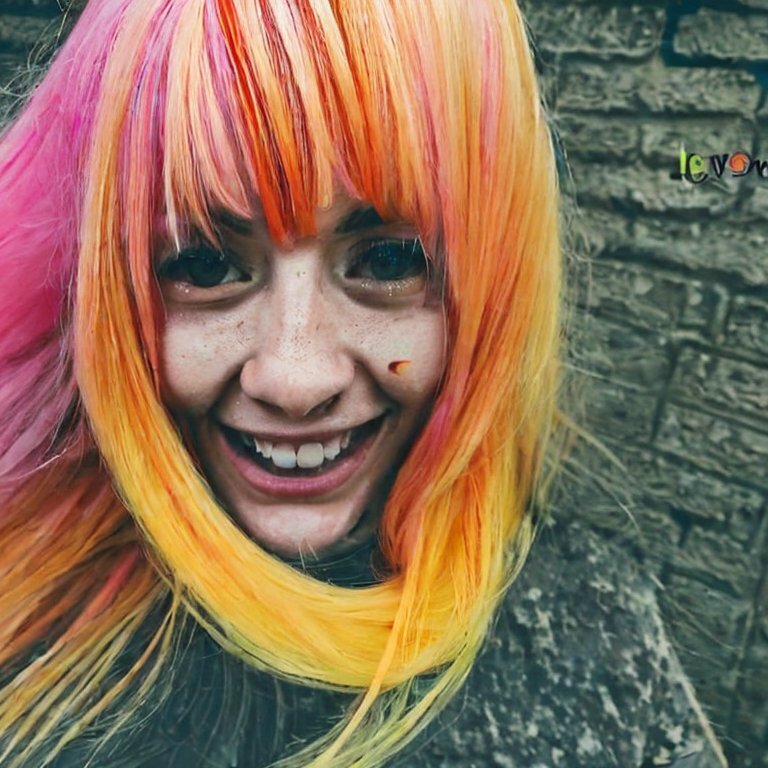
Linkedin:
TikTok:
Twitter:
Youtube:

Future challenges of artificial intelligence in social networks and public relations.
Artificial intelligence in social media has great potential to improve the efficiency and effectiveness of social media and public relations strategies. However, it also poses significant ethical and legal challenges.
One of the key ethical challenges is to ensure that artificial intelligence is used ina fair and non-discriminatory manner. Artificial intelligence algorithms in social networks and PR can replicate and perpetuate existing biases if they are not properly designed and monitored. There is also a risk that AI could be used to manipulate users or invade their privacy.
Another challenge is to ensure transparency and accountability in the use of AI. Companies and developers must be able to explain how artificial intelligence works in social networks and PR and how decisions are made. In addition, it is important to consider data security, especially when dealing with personal data. It is important to ensure that data is stored and processed securely and that existing privacy laws and regulations are respected.
Note to the reader: 90% of this article has been elaborated through artificial intelligence, both text and images. Below are some screenshots as a demonstration of the process:
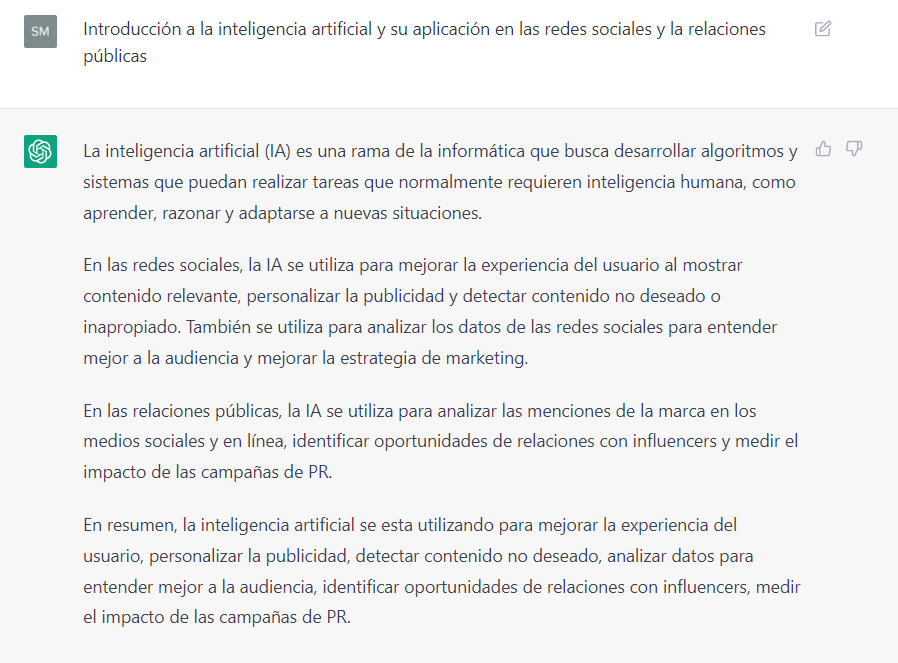
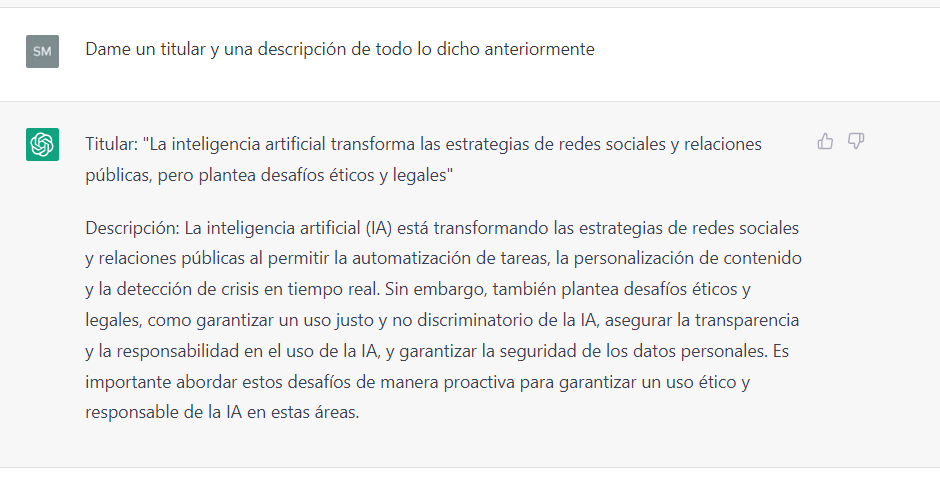
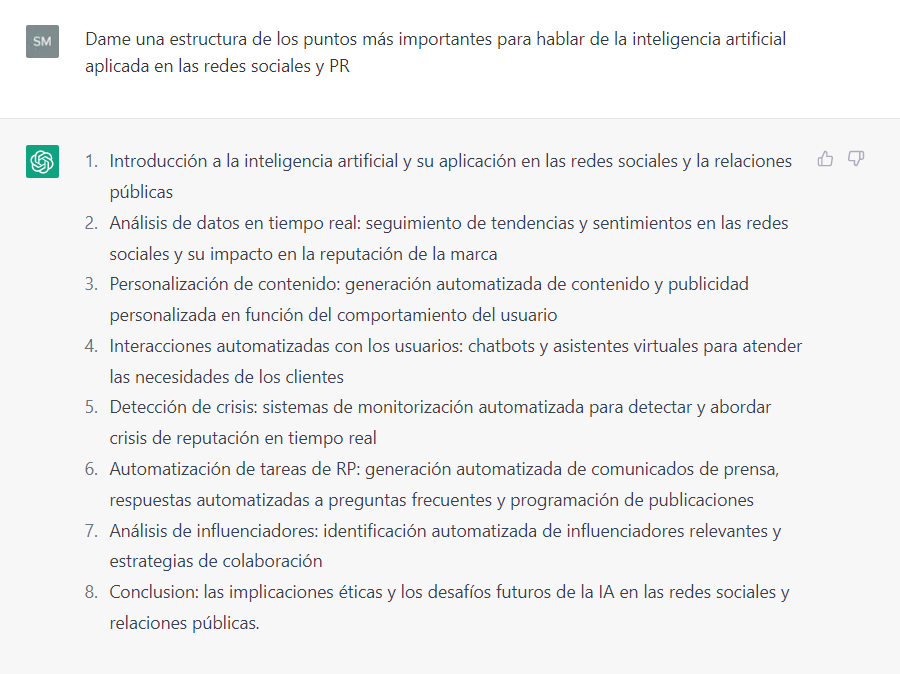
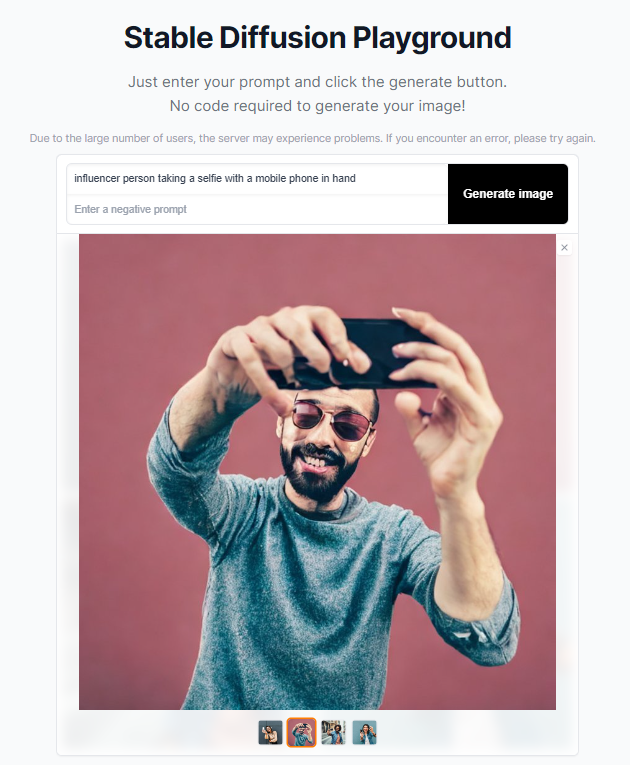
List of Social Media publications
- Were the best claims in history in their early days?
- A inteligência artificial nas redes sociais e nas relações públicas
- Artificial intelligence in social networks and PR
- We launch our 2023 social media observatory for the pharma sector
- Faster than the jewels of the Rally Clásico Mallorca
- Improve engagement in your social media strategy
- Digital Detox in times of confinement? Count me out
- Identity theft in social networks: what to do
- Young people, the new communication challenge for Real Estate (II)
- Instagram marketing strategies for businesses





